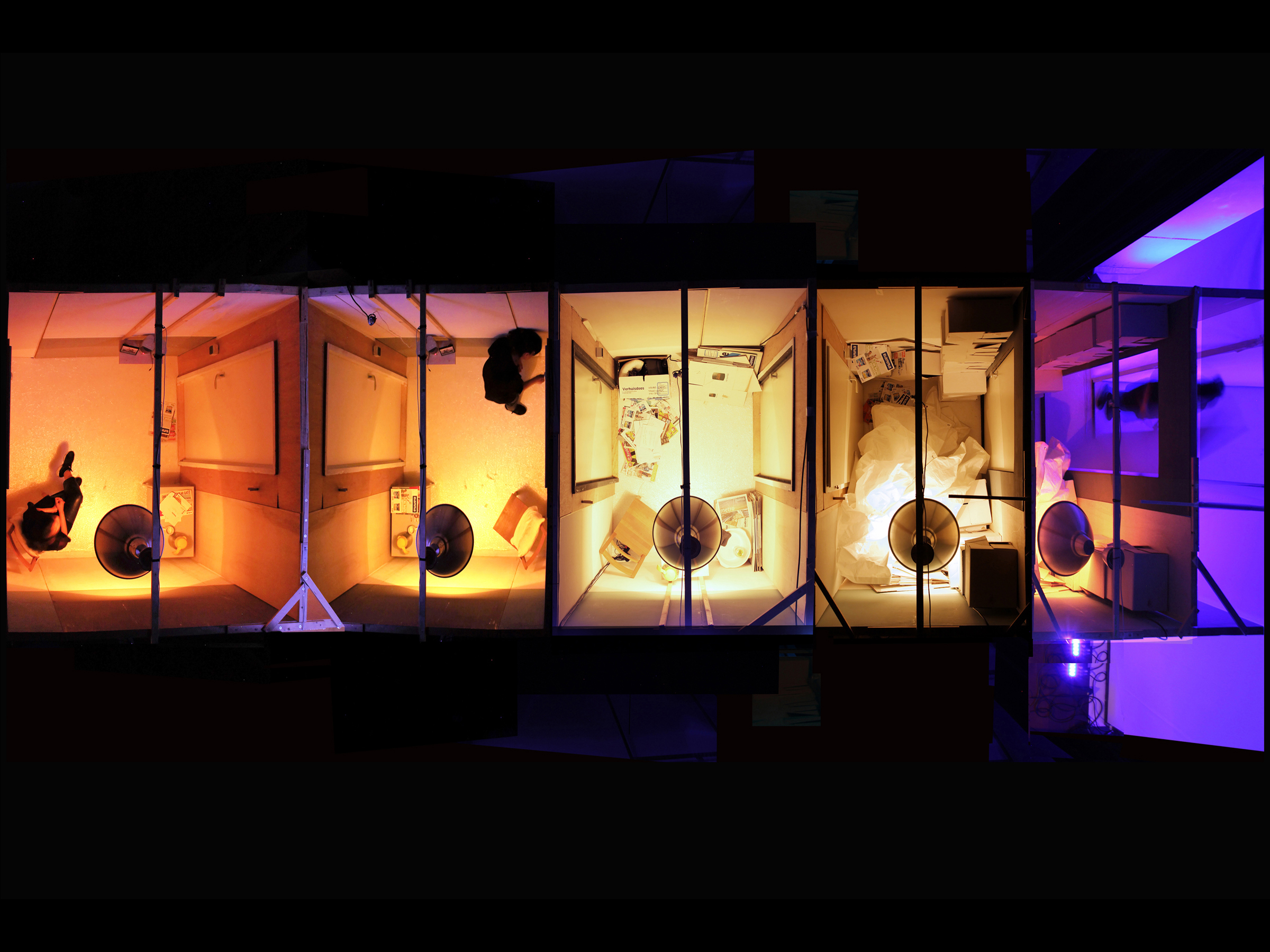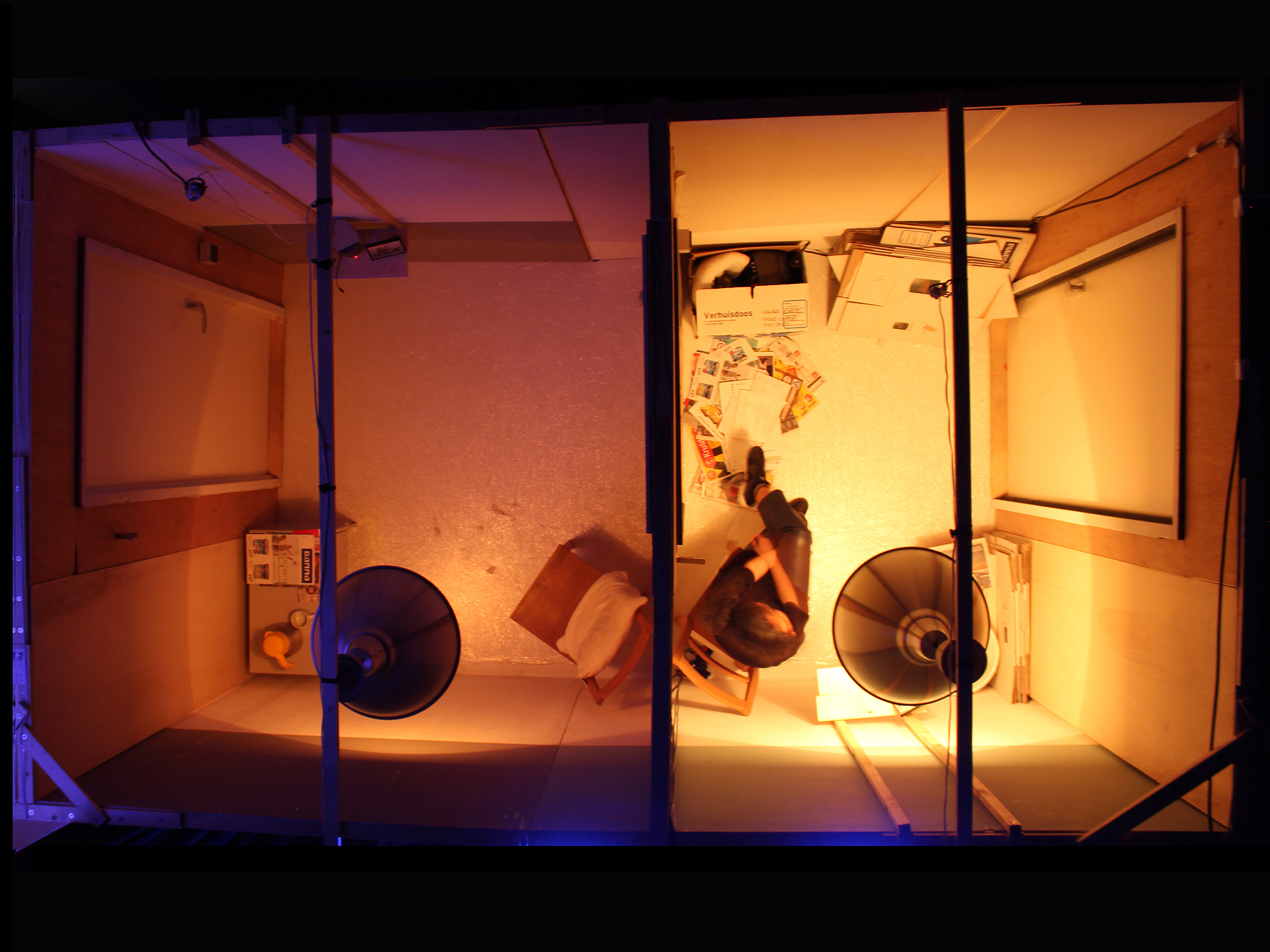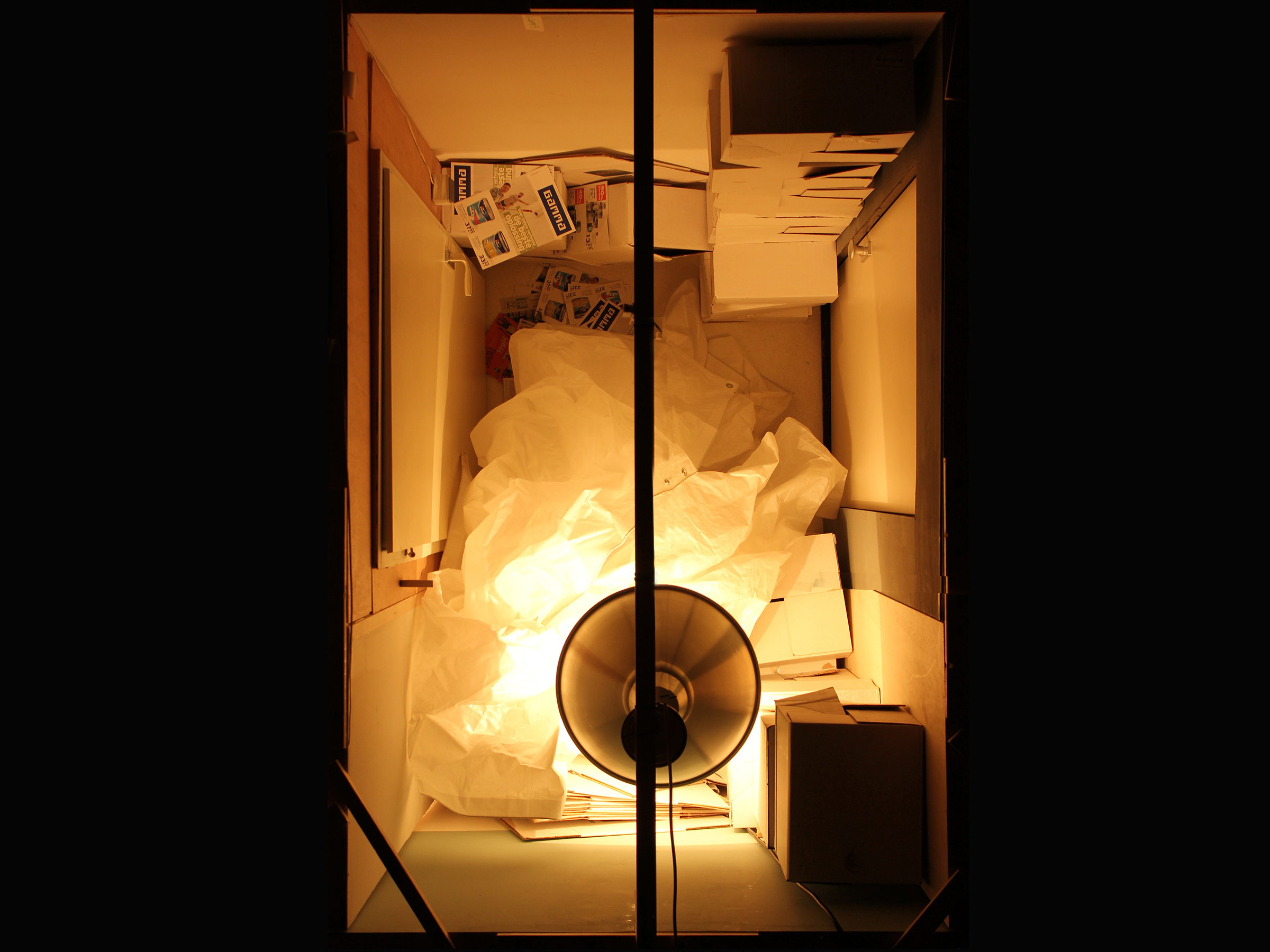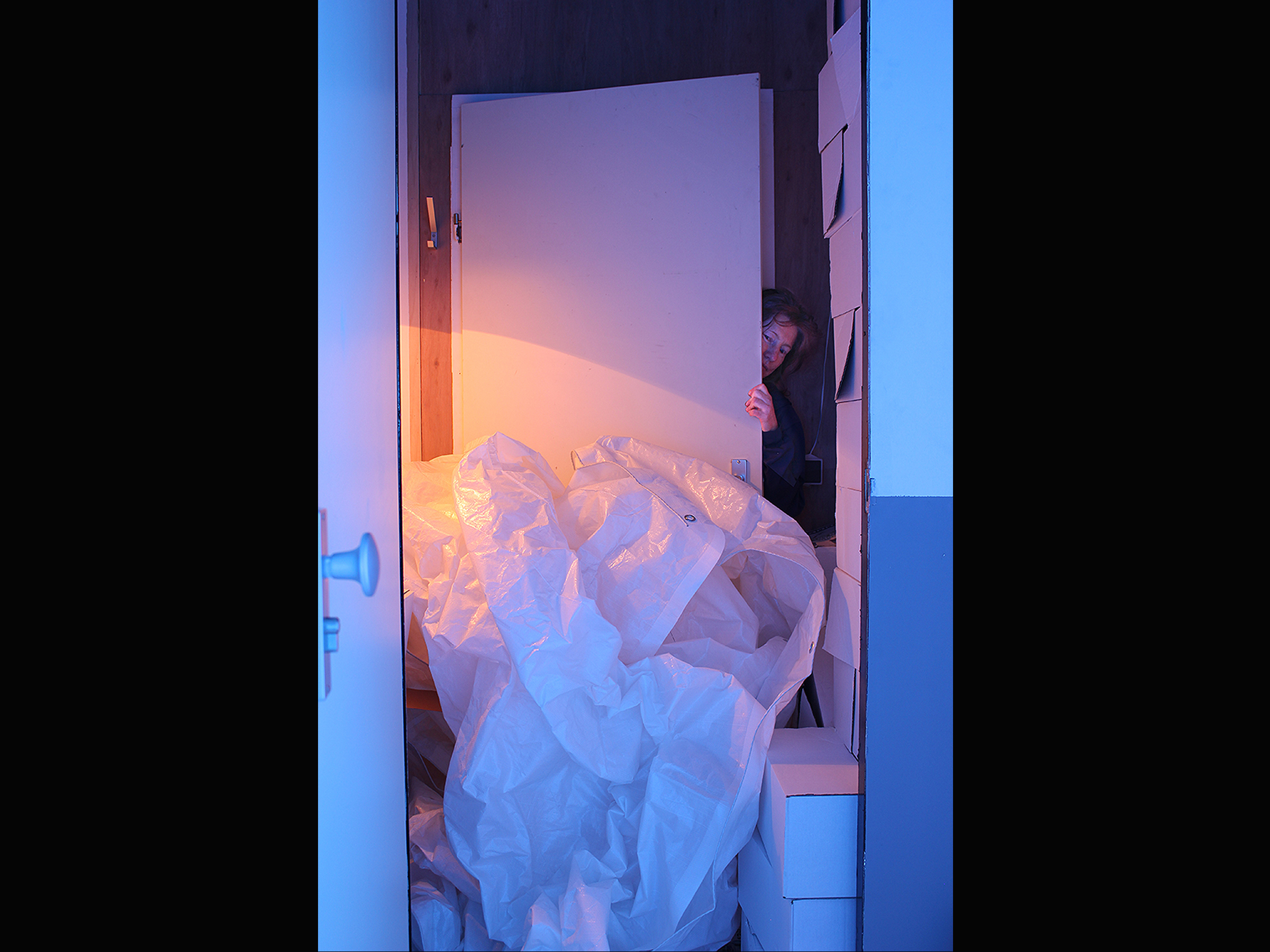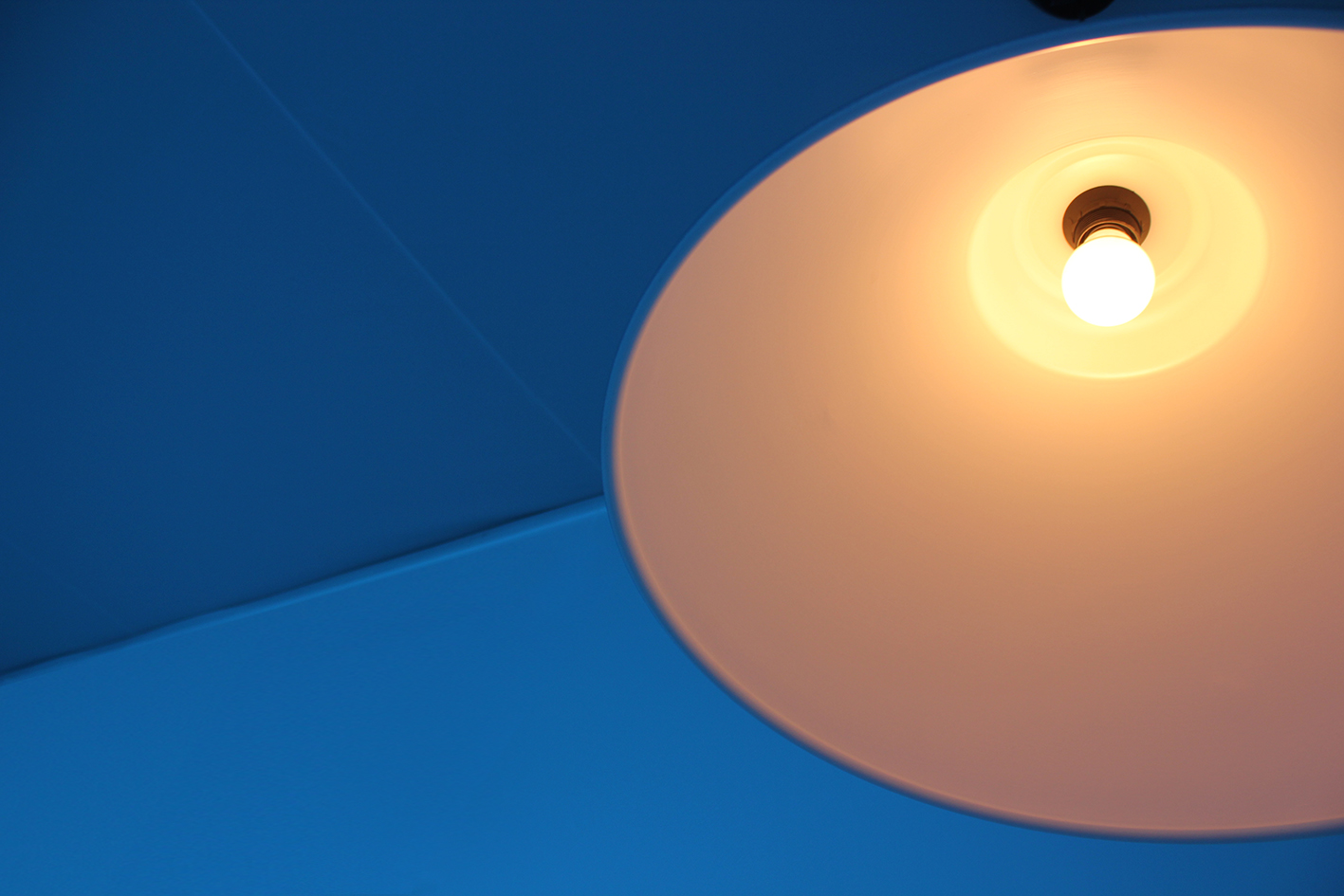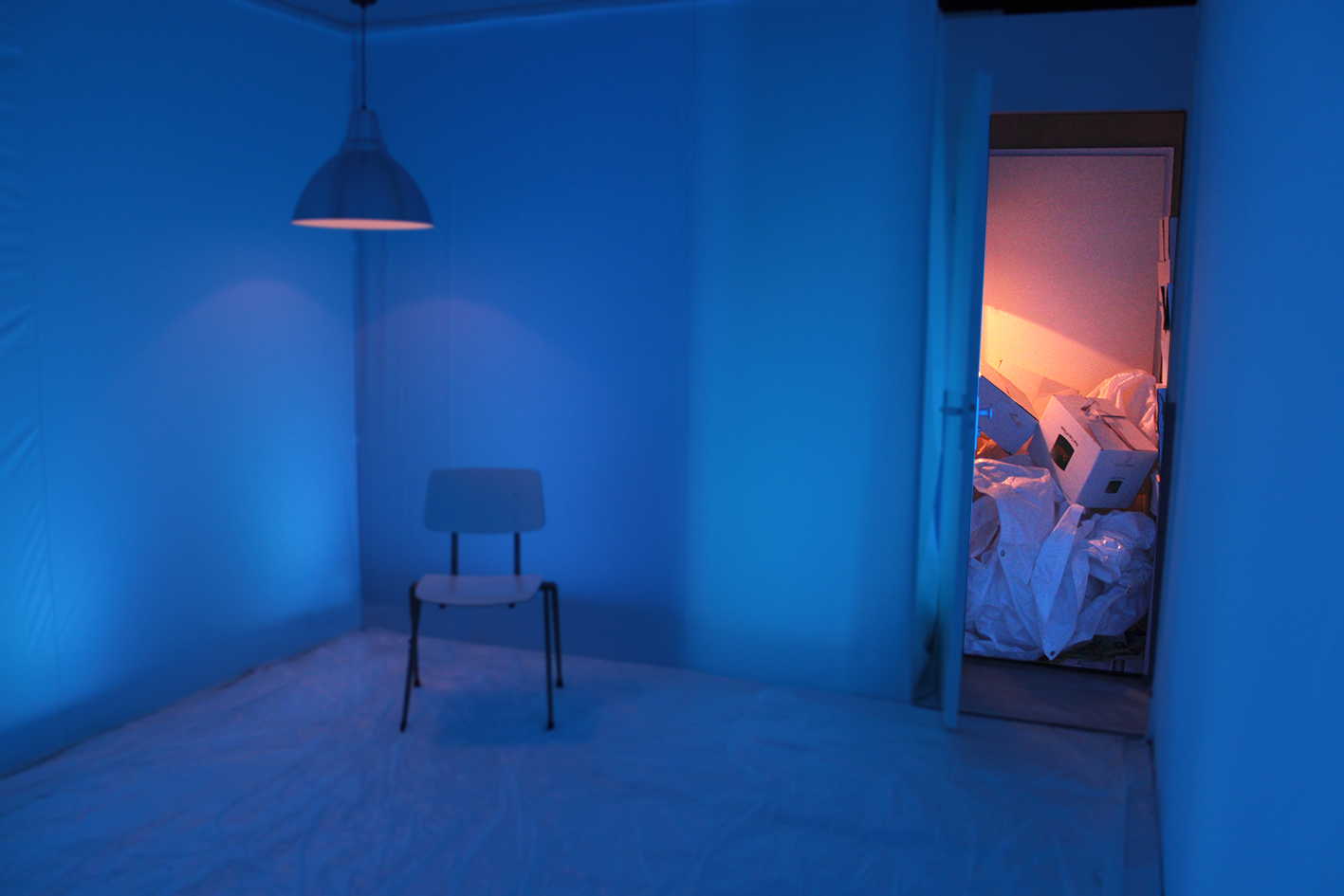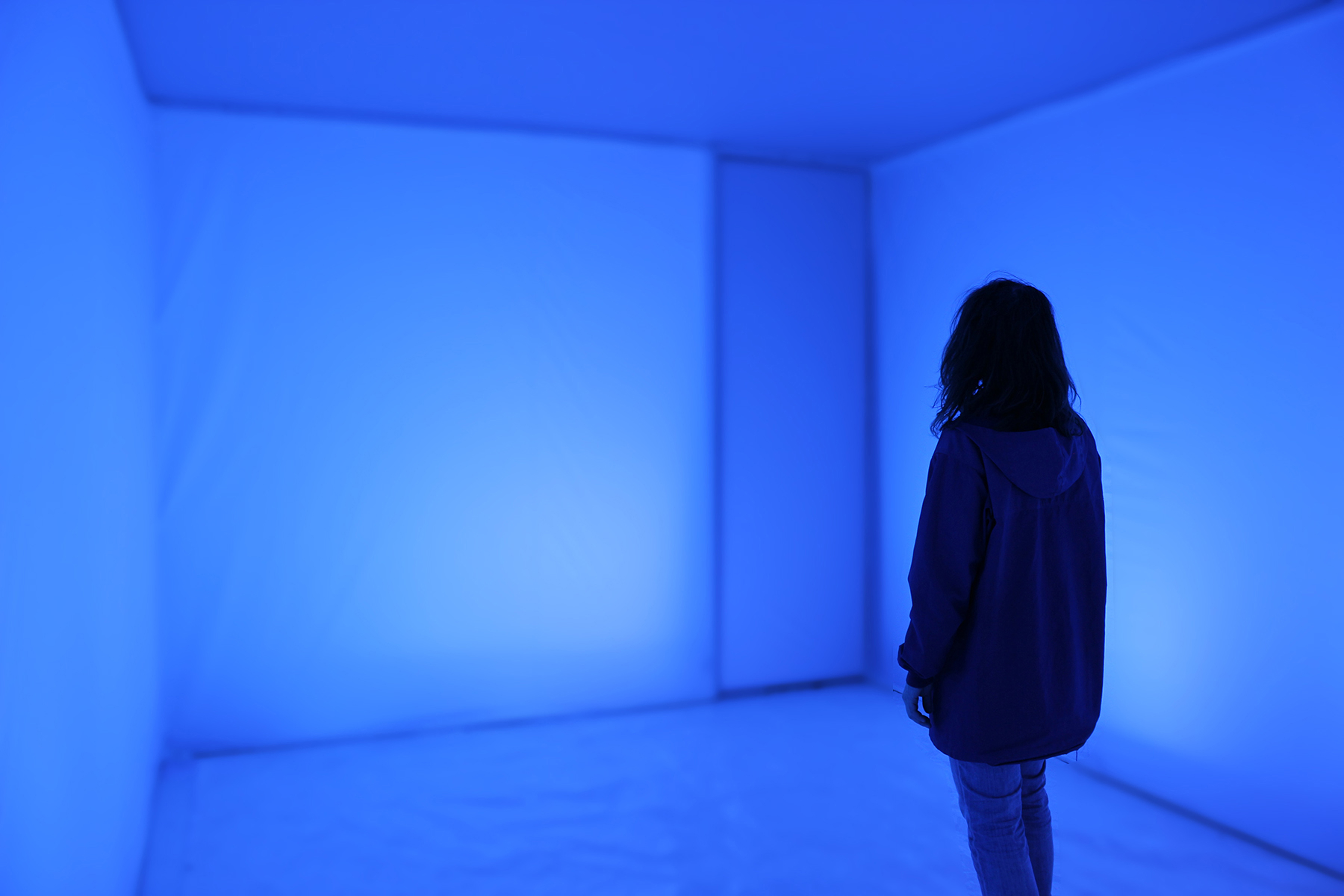IN.here is a long-term project of research and creation, developing an immersive, sensory installation exploring systems of control. The work explores a personal story of loss of home due to gentrification, the seemingly unstoppable, ongoing cycle of destruction and re-building. IN.here used this story of loss and perpetual development to explore how we as humans navigate a system that always needs to push forward. The loss of home becomes more than sharing a personal experience, but exploring ideas of the position of the individual within the larger systems within which we live. What happens when the demands of the world take up so much space that we no longer have space for ourselves?
IN.here is a series of seemingly identical rooms, directly following one another. The audience passes from room to room, using a key they are given when entering the installation. The audience is alone. Prior to entering they were asked to place those possessions they felt they could not leave behind into a moving box, which they carried with them through the space.
As they progress through the spaces, small shifts occur, the rooms start to break down, become unfamiliar or uncanny. Audiences are required to execute repeated domestic actions to activate and move through the spaces. These connect to their lived experiences, evoking muscle memories and creating a sense of familiarity, attachment and responsibility for the space. Audiences were confronted by spaces that became smaller and more occupied by objects. Under increasingly difficult conditions, they were urged to move forward. Finally they had to navigate through an almost impossible space, where there was literally no place for them, where they must displace other objects to make room for themselves. Pushing through, they came to an empty space, made only of sound and light and smell. Here they could take some time to reflect upon the work in relation to their own lived experience.
Progressively the audience's control is questioned, interrupted or undermined. The lights and doors work differently, the configuration of the rooms change, the music they choose in one space returns in another. They must navigate through different systems, in which the rules reveal themselves at different times, or not at all, or change during the journey. Through this physical journey, IN.here explores how we reconcile the position of the individual within the larger systems within which we live. How much control we can exercise as individuals? How do we reconcile ourselves when the rules change, or are not revealed to us? How do we continue to use and take responsibility for systems over which we have no control? By approaching these questions through the realm of the body and the senses, I hope the work will transform a complex, mental idea into an intimate personal experience.
IN.here uses the methodology of sensory scenography, and is work created for and by the experience of the audience. The first live lab took place at SPRING Academy, 2018. During the research cameras were used in each space to document the responses of the public. Biosensors were also used on some audience members to document their responses to different sensory stimulus. After experiencing the work, each test audience first spoke about their first impressions with the artistic team, and then responded to a detailed questionnaire to give insight into their physical and emotional response to the work, and their discovery and understanding of its underlying narrative and themes.
This time proved extremely fruitful in enabling the artistic team to see how the work functions and inspiring us with what it can become. It also made clear how vital the inclusion of the public in the making process is to this kind of experiential work.
Concept and scenography: vinny jones
Sound design: Léon Spek
System design: Mark IJzerman
Dramaturgy: Liesbeth Groot Nibbelink
Production: Jasper Hupkens
Photography: Ariane Trümper
IN.here is a production of Het Huis Utrecht/ vinny jones in collaboration with SPRING Festival
This research was conducted during SPRING Academy, 17-25 May, 2018 and was made possible through the support of Fonds Podiumkunsten Nieuwe Makers regeling.
